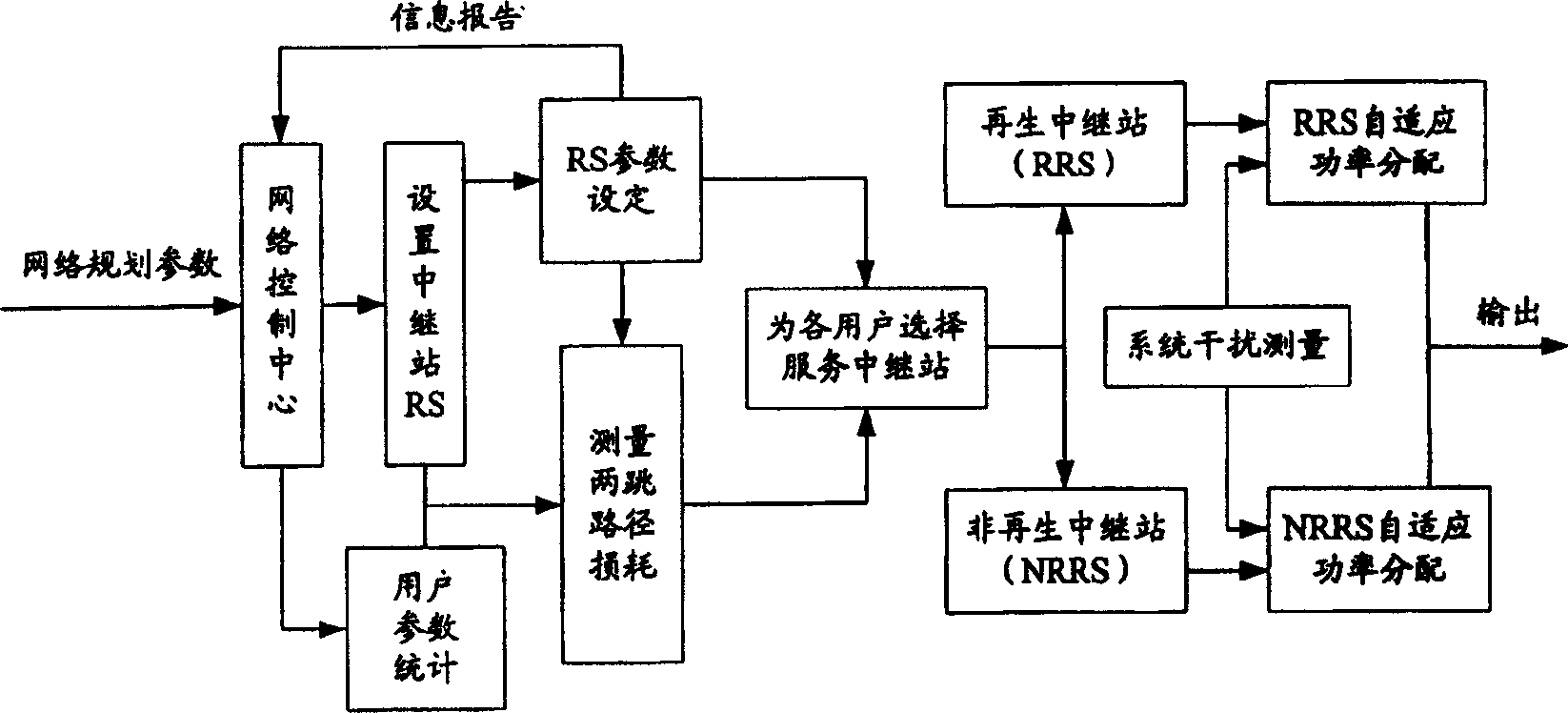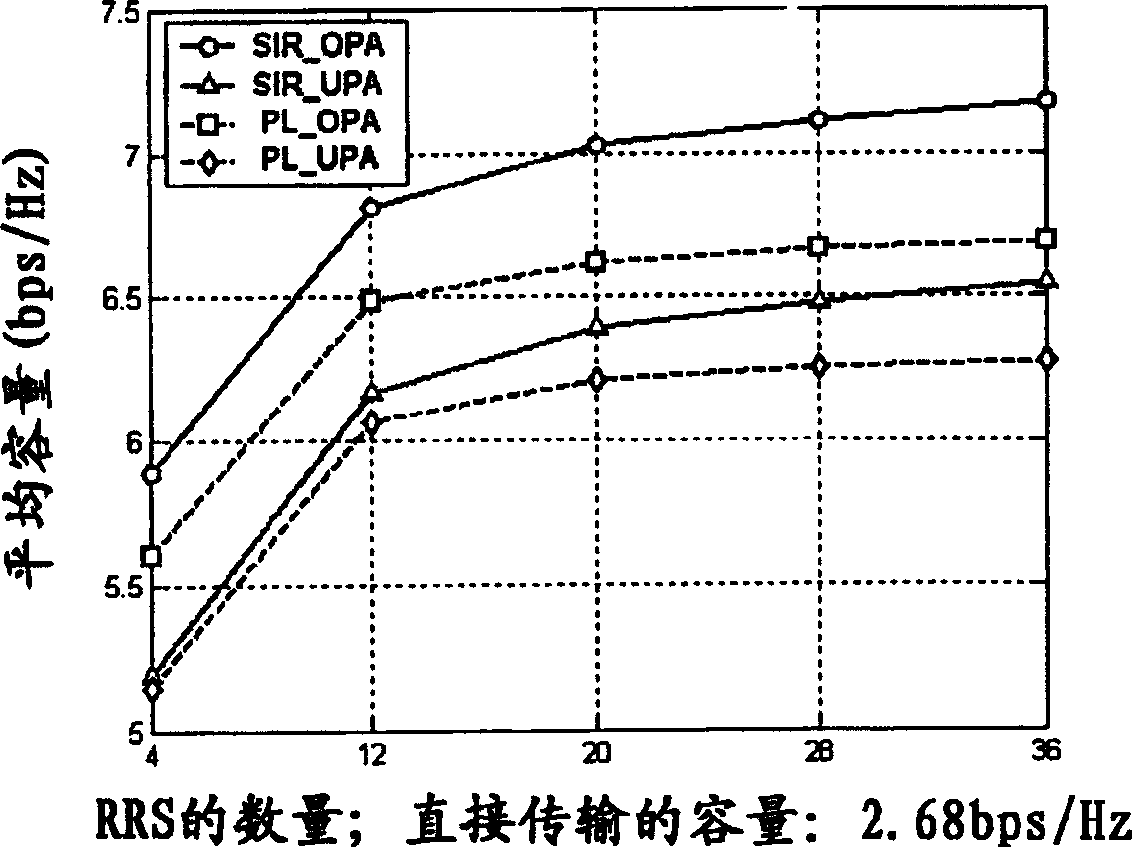Relay selecting and power distribution method for double bounce honeycomb system
A technology of a cellular system and an allocation method, which is applied in the fields of relay selection and power allocation, can solve the problems of low utilization of system resources, aggravated network signaling load, and increased computational complexity, etc., and achieves improved transmission quality and high performance-to-cost ratio. , the effect of reducing implementation complexity and network signaling load
- Summary
- Abstract
- Description
- Claims
- Application Information
AI Technical Summary
Problems solved by technology
Method used
Image
Examples
Embodiment Construction
[0021] Combine below figure 1 The relay station selection and adaptive power allocation method of the present invention will be described.
[0022] In the first step, according to the requirements of network planning, in the cellular system, the base station is the main control center, and N relay stations (RS) are set in its service area. These relay stations are located around the base station, and the relay stations of this cell serve the Users connected to this cell.
[0023] According to the different processing methods of the relay station for the received signal, it is divided into regenerative relay station (RRS) and non-regenerative relay station (NRRS), in which RRS decodes and reconstructs the received signal before forwarding, and NRRS amplifies the received signal before forwarding .
[0024] The second step is to collect basic information such as the location, working mode, and power limit of these RSs, and transmit the initialization parameters of these RSs to...
PUM
 Login to View More
Login to View More Abstract
Description
Claims
Application Information
 Login to View More
Login to View More - R&D
- Intellectual Property
- Life Sciences
- Materials
- Tech Scout
- Unparalleled Data Quality
- Higher Quality Content
- 60% Fewer Hallucinations
Browse by: Latest US Patents, China's latest patents, Technical Efficacy Thesaurus, Application Domain, Technology Topic, Popular Technical Reports.
© 2025 PatSnap. All rights reserved.Legal|Privacy policy|Modern Slavery Act Transparency Statement|Sitemap|About US| Contact US: help@patsnap.com



